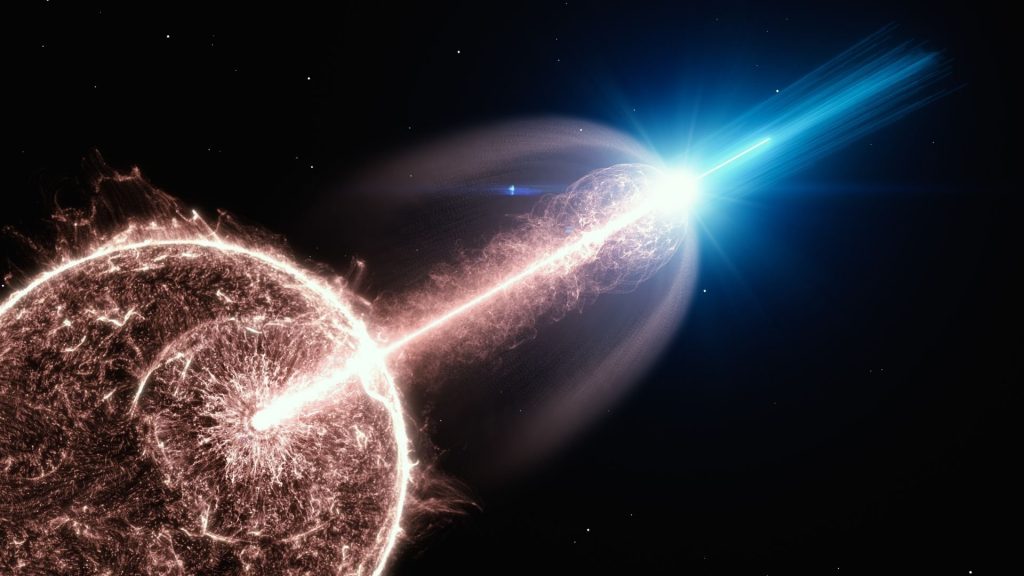The most powerful explosions in the universe – short bursts of high-energy gamma radiation – pose a mystery to astrophysicists: gamma radiation and X-rays emitted by a gamma-ray flash are simultaneously reduced – in contrast to the previous theoretical model. Observations now suggest that both gamma rays and X-rays have the same cause, according to HESS International Collaboration scientists in the journal Science.
“Gamma-ray bursts are bursts of gamma rays and X-rays that come from sources outside our Milky Way,” explains Sylvia Chu of DESY Research Center, who was involved in the study. “It’s related to the collapse of a massive star into a black hole.” Part of the energy released in this process drives a shock wave that travels at nearly the speed of light and accelerates electrons, among other things. These nearly light-fast electrons generate an outburst of high-energy radiation that lasts only a few seconds: a gamma-ray flash.
NASA satellites Fermi and Swift recorded a gamma-ray burst on August 29, 2019. At a distance of about a billion light-years from Earth, it turned out to be unusually close – on the other hand, the radiation from most gamma-ray bursts takes, on average, ten billion year to reach us. The much shorter distance enabled the researchers to analyze in detail the afterglow of the gamma-ray burst, that is, the X-rays and gamma rays that decay after the outbreak.
Telescopes measure signals from gamma-ray flashes
Using the special telescopes of the “High Energy Stereoscopic” HESS system in Namibia, astronomers were able to observe the afterglow for an unusually long time – up to three days after the actual explosion. “Observations revealed a striking similarity between the X-ray component and the very high-energy gamma radiation in the afterglow,” Chu says. This is surprising to the researchers, since it was previously assumed that gamma rays and X-rays are generated differently: according to the previous theory, X-rays initially occur when the strong magnetic field created by the black hole deviates from the fast electrons. . If these rays then combine with the X-rays, the more energetic gamma radiation is supposed to be generated.
This model now appears to be called into question. Not only because gamma rays and X-rays are weaker at the same time after the radiation breaks out, but also because the spectrum of gamma radiation is seamlessly correlated with X-ray radiation. “We would not expect to observe such similar spectral and temporal properties given the separate origins of these radiation components,” says researcher Dmitry Khangulyan of Rikkyu University in Tokyo.
In order to trace the physical processes responsible for the formation of high-energy radiation, more observations are now needed. The eruption of August 29, 2019 was particularly close to us, and thus is the only one in which prolonged afterglow and up to this high energy range can be observed. With telescope systems already under construction, such as those in the Chilean Andes and the Cherenkov CTA Telescope Array being built at La Palma, it should soon be possible to observe the glow of very distant gamma-ray flashes.

“Total coffee aficionado. Travel buff. Music ninja. Bacon nerd. Beeraholic.”






More Stories
How to calm yourself!
Evolution: How life came to Earth
The closest supernova to Earth in years produced a surprisingly small amount of gamma radiation